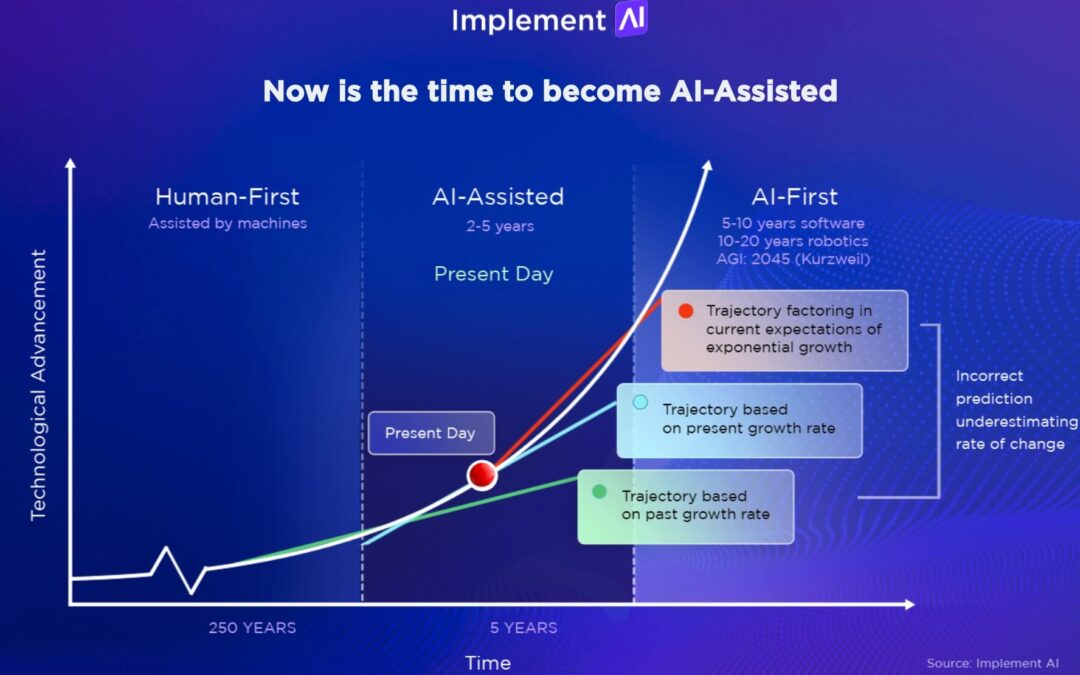What AI-based tools and digital marketing techniques should businesses from small to large be considering?
I’ve been fortunate to be involved in digital marketing for over 25 years now. The opportunities presented by AI recently are the most exciting developments that I have seen in this time, since the early days, where everything from organic search, a website and email marketing seemed a similarly huge opportunity.
This range of projections of advancement in AI presented at Technology for Marketing by Implement AI highlights that we are at a relatively early stage of adoption of AI, with the biggest advancements yet to come as has recently been hinted by the rapid adoption of ChatGPT.
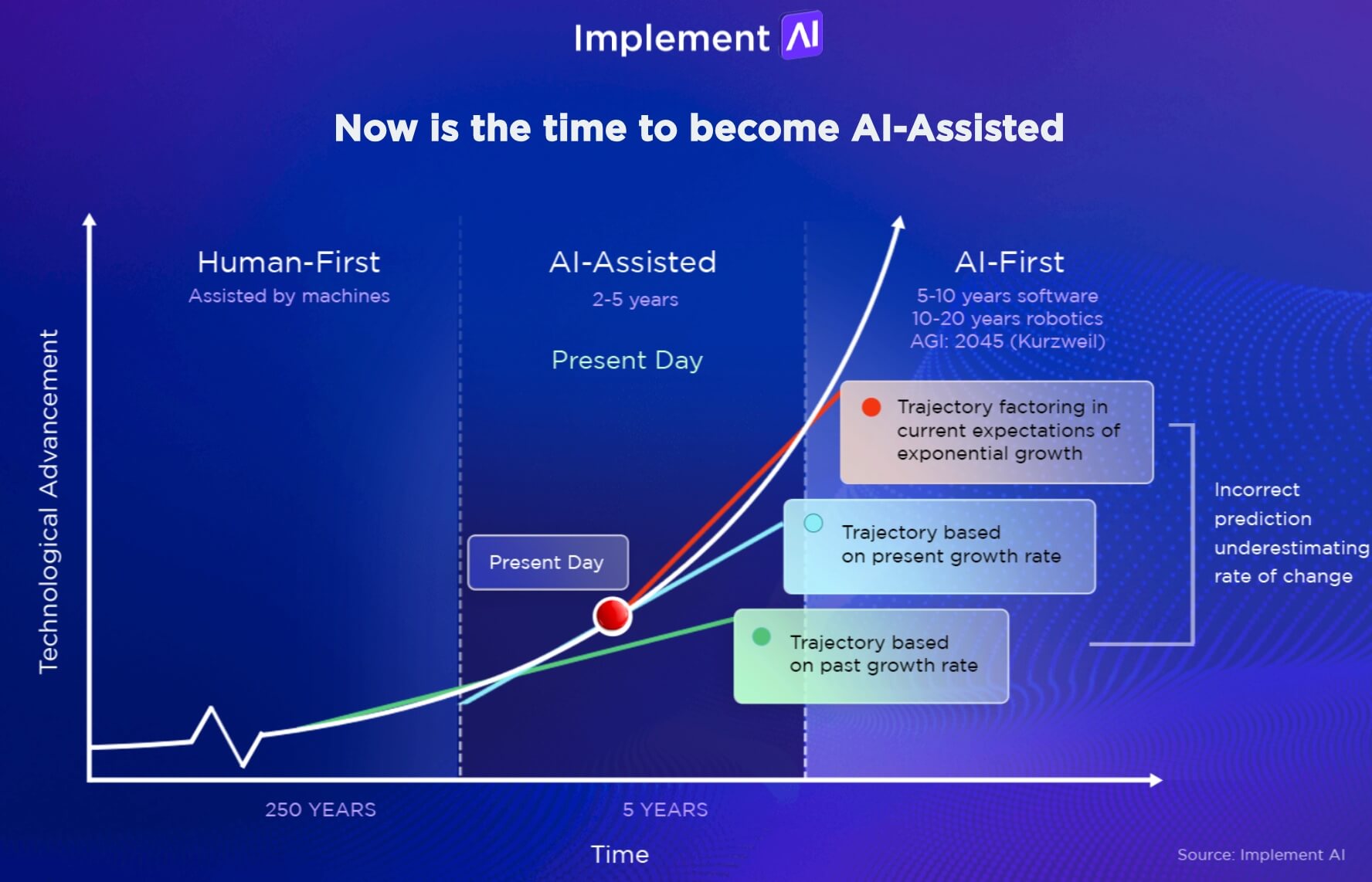
In this post, I’ll summarize trends in real-world applications of AI and tools to consider that are open to any business from small to large. Some of the hottest marketing applications and trends in AI we’ll cover are in these five categories
- Generative AI
- Autonomous AI
- Causal AI
- Conversational
- Predictive Analytics
For each technology, we’ll look at how they can be used in marketing and recommend some of the best free and paid tools to consider. Apart from the techniques and tools, in the last section, I’ll also review the issues of governance and management – What actions should businesses be taking to improve to their use of AI.
Generative AI is currently at the peak of interest according to the latest Gartner Hype Cycle on emerging AI technology. This means that in theory, it will soon enter the ‘trough of disillusionment’ and evidence of this is the comments in subreddits such as r/ChatGPT where power users complain of new limitations caused by legal and ethical concerns. There are also recommendations for other ‘Personalized AI’ competitors which I’ll cover below which given the growing popularity of these and specific paid marketing solutions such as Jasper and Writesonic suggest to me that this category is still ‘on the up’.
Of course, the applications of AI in marketing aren’t new. In 2017 we shared these use-cases for Artificial Intelligence (AI) in marketing
Our visual shows the wide array of applications for Machine Learning and AI for marketing, all of which can be put in place today.
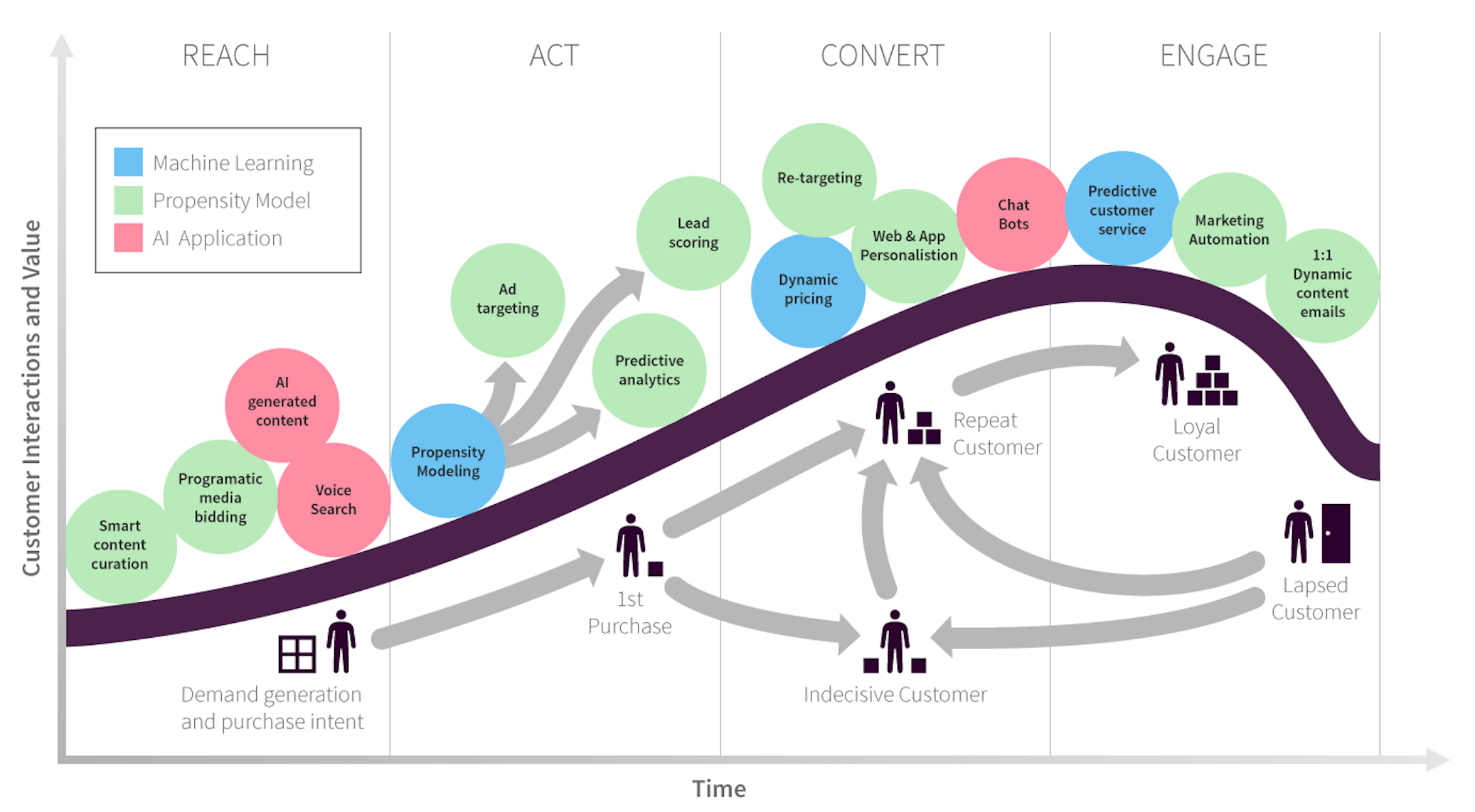
None of the technology is speculative or on the horizon, these are current marketing techniques already being utilized by many successful companies.) across our customer lifecycle
A good place to start to review the latest trends in AI are the latest Gartner Hype Cycles since the ‘on the rise’ category
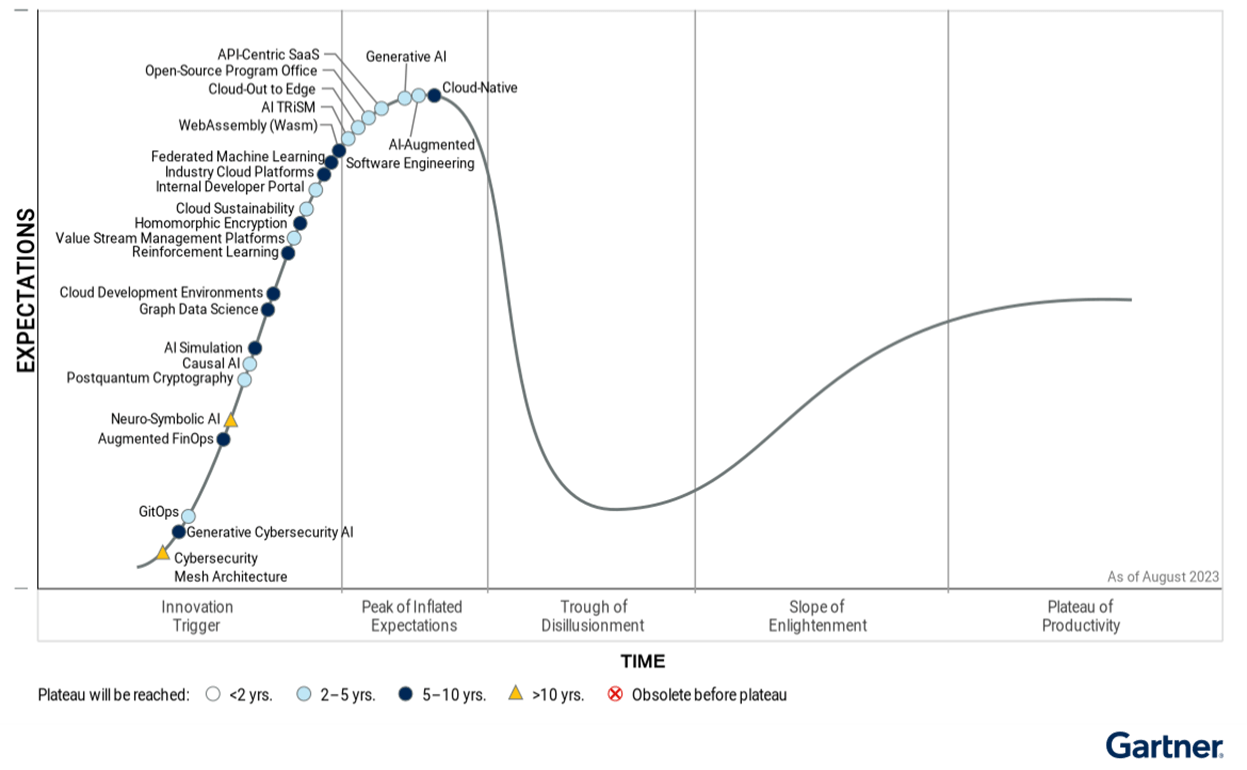
1. Generative AI
Developments in Generative AI which produces text, visual and video content from prompts has seen many new features introduced into ChatGPT this year, with just this week it’s been announced that ChatGPT will be able listen and respond to audio prompts, read visuals and with DALL-E integrated, create visuals. This move from text to richer content is part of the trend in this category, with it even being able to produce video delivered by human-like avatars through tools like Synthesia.
This year there has been a huge investment in Generative AI, with Microsoft’s investment and collaboration with OpenAI, the obvious example. With Amazon recently betting $4 billion in Anthropic, the developer of Claude we can expect the Amazon re-branded version of Claude to do well in the years ahead.
Another trend within Gen AI, is that we can expect more regular updates to Large Language models which enable us to work with more topical information than the 2021 currently offered by OpenAI. Although OpenAI don’t seem to have cracked this problem yet, Google seems to. You can ask Bard for a summary of the main developments in digital marketing in 2023 and it does a decent job – great for seeing what you may have missed. You can even ask it about trends in AI within marketing for 2024, but the results there are generic compared to this article since it can’t extrapolate as well as a human.
We can also expect that the release of Google’s new Search Generated Experience (SGE) will dramatically increase use of Generative AI when it goes live, which is expected to happen in 2024. This will give Google users an AI conversational response like Bing AI. It’s currently being tested in the US, India and Japan and although Google is testing many changes to balance usability and monetization through Ads, it seems likely it will launch in 2024. Some SEOs such as Eli Schwartz are forecasting an SEO apocalypse as clickthroughs to sites decline as the AI in the SERP answers the user’s query.
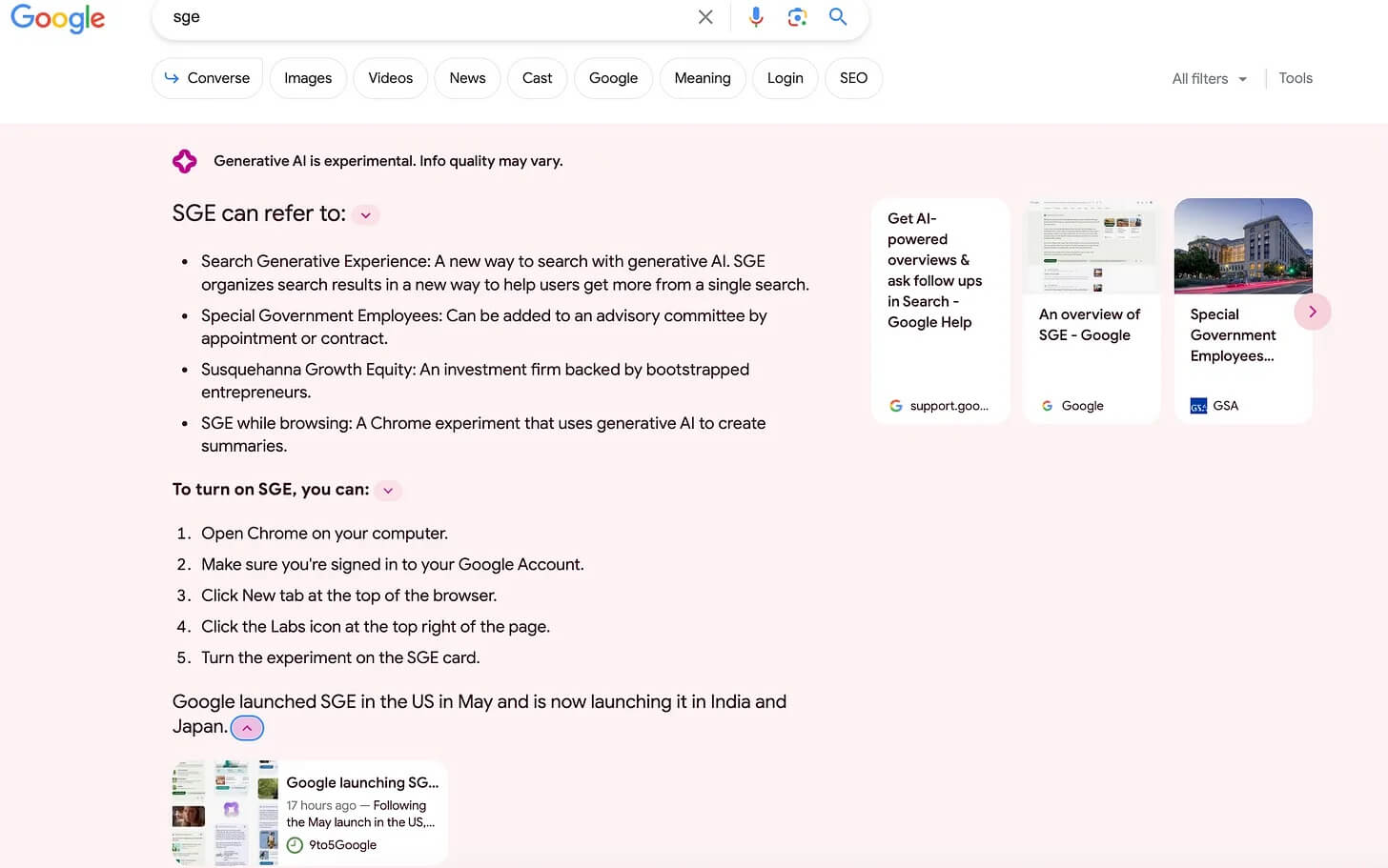
Finally, another trend within Generative AI is illustrated by Pi from Inflection (founded by ex-Google Deepmind developer Mustafa Suleyman (CEO)). In 2023 Inflection AI announced $1.3 billion of funding led by current investors, Microsoft, and NVIDIA.
Billed as a Personal AI, this currently has a more user-friendly conversational style than ChatGPT which can be voice-enabled and some have compared to the AI in the movie: ‘She’. For me, it’s impressive since it provides a genuine conversation where the AI leads to step you through an issue towards solutions. Compare this to ChatGPT where you have to lead with intelligent prompts to get the most from it…
2. Autonomous AI agents
The future of Autonomous AI agents was highlighted in 2023 when AutoGPT was released. Note that this isn’t an official OpenAI release, although much of the superficial commentary on it suggested it was. Rather it involves clever innovation from one developer to add a coding ‘wrapper’ around ChatGPT via the API. So, it’s only available to developers who manually install it from the GitHub code repository. However, it has engaged many developers with its potential, becoming the top trending download on Github.
Microsoft Jarvis is another example showcasing the potential of autonomous agents. Like AutoGPT it can only be setup by developers downloading code – it’s not a service yet. This article on How to Set Up and Try Microsoft Jarvis / HuggingGPT shows the approach through this visual.
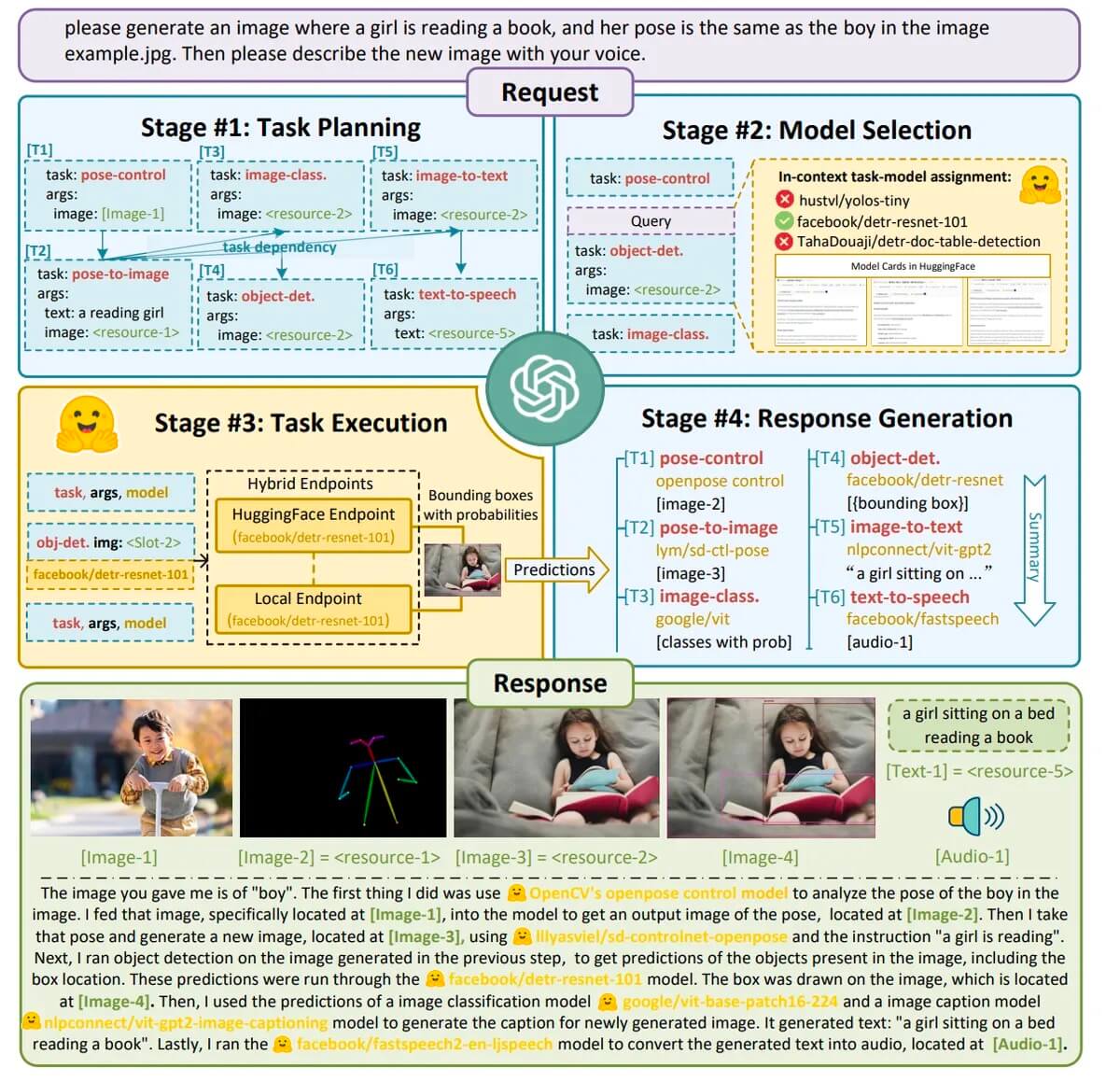
So, AutoGPT and Jarvis can connect to and control other web services using APIs and perform actions such as web searching, web forms, and API interactions. AutoGPT works by self-generating the necessary prompts to reach a desired goal. It does this by breaking down the goal into sub-tasks to generate prompts for each sub-task. It then executes the prompts and gathers data to refine or validate its prompts and their outputs. The application then iterates until it completes the tasks and the top-level goal.
For marketers, the impact of AutoGPT is more in showing what AI the future will offer in the future, such as autonomous bots that can be set a task to research a topic and select and buy products, such as the cheapest flight from X toY. In fact, Paul Smith and I wrote about this in our first 2001 edition of Digital Marketing Excellence as a future option, to me it’s still years into the future for widespread adoption.
AutoGPT and Microsoft Jarvis highlights these features of autonomous AI agents. It can :
- Work through a series of steps to achieve a goal
- Chain a series of actions based on prompts
- Take decisions based on the results of previous prompts
More general applications of autonomous AI are self-driving cars and robotic automation.
3. Causal AI
Causal AI is the other category of AI identified by Gartner – see What’s New in Artificial Intelligence from the 2023 Gartner Hype Cycle.
Causal AI will possess more human-like intelligence and will be able to assist in analysis and decision-making. Its aim is to uncover the cause-and-effect relationships between marketing efforts and outcomes. The article above gives these examples of the type of question that can be answered: what if we had only targeted Group A instead of all of Group B? What if we spent an extra $20,000 on TikTok instead of Instagram? How many additional conversions would that deliver? In other words, It lets us go beyond predictive accuracy and get insights into the incrementality of our marketing dollars.
As an innovative technology, there are few competitors in this space. One is Causal Lens which offers to support decision-making by understanding the drivers of behaviour as this case study of retention drivers for an insurance company shows.
4. Conversational AI
For the last two key categories of AI, we return to more established AI marketing capabilities which don’t feature as emerging AI according to Gartner.
Conversational AI is where AI supports direct customer interactions of which there are two types:
- Customer-driven inbound customer enquiries which are sent via web contact forms
- Company-driven outbound communications such as email welcome and nurture sequences which are for promotion and engagement
The main development amongst vendors in this sector relates back to Generative AI where solutions are now less based on rigid templates, but more relevant responses based on prompting with the customer query and tuned to the relevant business question. Autonomous agents will increasingly replace simple questions, but human oversight is mostly still required.
Vendors in this sector include services like Intercom which we use and Drift which offer inbound and outbound capabilities and others such as Genesys and Zendesk which focus more on inbound communications.
5. Predictive Analytics
I’m covering predictive analytics last, since in large businesses with business intelligence teams this is one of the longest-established technologies with numerous applications across marketing including
- Customer Segmentation: Predictive analytics is used to segment customers based on various attributes, such as demographics, behavior, lifetime value and purchase history.
- Lead Scoring: By analyzing historical data and identifying patterns, predictive analytics can assign scores to leads, indicating their likelihood to convert into customers. This helps marketing and sales teams prioritize their efforts on high-potential leads, leading to more efficient lead management.
- Churn Prediction: Predictive models forecast which customers are at risk of churning (leaving) based on their behavior and interactions. Marketers can implement retention strategies to reduce customer churn.
- Personalization and Recommendation Engines: E-commerce and content platforms use predictive algorithms to suggest products, services, or content to users based on their past behaviors and preferences. This enhances the user experience and drives sales or engagement.
- Marketing Campaign Optimization: Predictive analytics can help optimize marketing campaigns by predicting which channels, messages, and timing are most likely to yield the highest conversion rates. This maximizes the return on investment (ROI) of marketing efforts.
All these applications will continue, but supported by the other types of AI innovations we have reviewed such as Causal and Generative AI.
Trends in managing AI and governance
Businesses are reviewing the opportunities of AI, but they also need to manage the downside. Implement AI identifies these negative factors of AI that need to be managed in their article on The AI-Assisted Organisation – a blueprint for Small and Medium Businesses.
- Job Displacement. Workers performing repetitive analytical and mechanical tasks face displacement through automation.
- Data Privacy. Concerns collecting, processing and securing ever-growing datasets raises concerns around consent, transparency and misuse that can erode customer trust if not intelligently managed.
- Digital Ethics. As automated systems impact people’s lives, proactively developing ethical frameworks needs to be guided by principles of transparency and accountability.
- Security Risks. Increasing reliance on AI and interconnected systems means system
security must be considered.
AI policy for marketing communications
We believe that more organisations developing is a major trend given the impact that Generative AI in particular, has had, so we have a separate section on this.
In this podcast, Implement AI reviews further recommendations to AI policy summarized how to manage these challenges for these types of business:
For Large, Enterprise Businesses:
- Create an AI policy framework to provide guidelines on ethics, data privacy, security, and explainability of AI systems across the organisation
- Form an AI committee with cross-functional leaders to govern and continuously review the AI policy and strategy
- Provide comprehensive AI training to employees on using new tools responsibly and optimizing workflows
- Appoint a Chief AI Officer to own and drive the AI strategy and roadmap forward
- Engage stakeholders like customers and employees on AI plans to retain trust and talent
For SMEs:
- Draft an AI policy even if basic to start aligning business goals with AI adoption
- Assign AI responsibility to a senior leader even if part-time to drive strategy
- Evaluate customer data handling and security practices required for AI systems
- Explore AI opportunities to gain competitive advantage through faster task completion
- Be transparent about AI plans with staff to ease uncertainty and align on the vision

